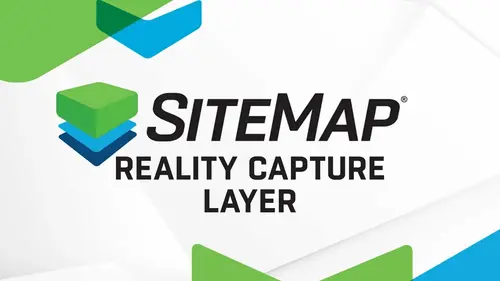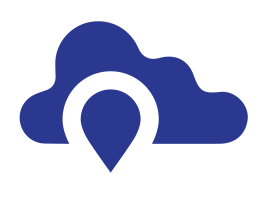SiteMap® Reality Capture Layer: Visualize Your Built World in One Platform

In June 2025, GPRS launched the SiteMap® Reality Capture Layer. This is the next evolution in giving clients a fully integrated view of their built environment. This isn’t just data storage. It’s a dynamic platform. It combines precise reality capture with geospatial intelligence. This helps architects, engineers, and facility managers make informed decisions and streamline coordination.
At its core, our Reality Capture services are designed to do exactly that: capture your reality. Using advanced LiDAR-based 3D laser scanning, our Reality Capture Project Managers provide precise as-built documentation. This accuracy supports informed design, renovation, and infrastructure planning.
SiteMap also enhances infrastructure and architectural visualization with the Reality Capture Layer. This feature allows you to store and interact with 2–4 mm accurate 3D laser scan data. SiteMap keeps your data secure and organized. Whether you manage one site or a nationwide portfolio, it’s easy to access. You’ll be ready for design, renovation, or audits.
What Is the SiteMap® Reality Capture Layer?
The Reality Capture Layer is your gateway to high-fidelity, geolocated 3D data. Designed for intuitive use, it simplifies working with complex spatial datasets. Whether you're reviewing a scan from a recent renovation or planning a new build, SiteMap gives you the tools to visualize your site in detail.
The Reality Capture Layer is your gateway to high-fidelity, geolocated 3D data. Designed for intuitive use, it simplifies working with complex spatial datasets. Whether you're reviewing a scan from a recent renovation or planning a new build, SiteMap gives you the tools to visualize your site in detail.
What Deliverables Can You Access?
Point Cloud Data
Point clouds are raw spatial datasets. They are generated from 3D laser scanning via LiDAR or photogrammetry. These dense collections of X, Y, and Z coordinates deliver large datasets that AEC professionals can mine for information. They are also the backbone of 3D BIM models, digital twins, and 2D CAD drawings.
These point clouds are then transformed into actionable insights. Our Mapping & Modeling team can convert them into 2D CAD drawings, 3D BIM models, and interactive virtual walkthroughs.
You can zoom, measure, and analyze point cloud data directly within SiteMap. There’s no need to toggle between software platforms.
.gif)
You can use advanced tools to customize your view of point cloud data on the Reality Capture layer. These tools help you analyze the data in great detail. Some of the tools include:
- Distance Measurement
- Height Measurement
- Angle Measurement
- Volume Measurement
- Polygon Clipping
- Volume Clipping
- Customizable Node Size
- Customizable Splat Quality (Detail of the Model)
- Customizable Backgrounds
- Customizable Navigations / Perspectives
- & much more!
You can learn more about point clouds in this article.
Virtual Walkthroughs
Using professional-grade 3D cameras or LiDAR-based scanners, Existing Conditions captures immersive 360° walkthroughs of your facility. These walkthroughs are powerful tools for collaboration, documentation, and decision-making.
View your site with:
- Dollhouse View: Full 3D model of your property
- Floor Selector: Isolate and inspect individual floors
- Measurement Tools: Take accurate measurements from any angle
- Bird’s-Eye Floor Plans: Top-down view of your layout
.webp)
This helps you make informed decisions and avoid costly rework and delays. Whether you’re remote or on-site, interacting with the digital twins gives you the situational awareness to understand what you are working with.
Revit
Autodesk Revit is a cornerstone of modern architectural and engineering workflows. The SiteMap Reality Capture Layer integrates Revit models directly into the platform. This enables users to interact with their BIM data in context.
SiteMap fully integrates with Autodesk Revit, the industry-standard BIM software. Once your model uploads, you can explore it using:
- First-Person Point of View
- Measurement Tools
- Explode – Disassembling the Model
- Media Browser for Selective Visibility
- Multiple Viewing Modes: 3D, Topographical, MEP, Civil, Architectural
- & more!
This level of detail helps AEC professionals plan, design, and manage with confidence.
.webp)
What Sets the SiteMap Reality Capture Layer Apart
Matt Mikolajczyk, Director of Reality Capture, explains what sets the SiteMap Reality Capture Layer apart:
“It’s all in one place and it’s geolocated, so it’s on top of the building that it belongs to. With Google Drive, Procore, or Box, there are all these other file storage solutions you can put all in one place. Ours is different because it’s geospatially all in one place.”
This isn’t just about convenience. It’s also about context. SiteMap uses advanced GIS mapping to layer your reality capture data onto your site’s geolocation. Instead of digging through folders, you’re navigating your facility in a precise digital environment.
SiteMap offers a fully integrated experience. Unlike other platforms, it doesn’t need manual linking or data management.
“I think there are other tools like SiteMap, but for a lot of those tools, they still rely on the end user to link them into the platform. That’s another benefit. We do that as part of our service. We put [your as-built information] in this platform for them, so they don’t have to manage it. They can just get in and use it.”
How to Use the SiteMap Reality Capture Layer
Once you log into SiteMap, you’ll find the Reality Capture Layer in the toolbar on the left-hand toolbar.
.webp)
To locate your job, you can:
- Enter your Work Order Number (WO#) or company name in the Reality Capture Layer search bar
.webp)
- Enter the site address in the main search bar
.webp)
The same can be done on the “Jobs” tab, which is also in the left toolbar. The Reality Capture deliverables won’t populate there, however.
If you search by WO#, you can filter by deliverable type.
.webp)
Once your data populates, you can explore and analyze every deliverable directly within SiteMap. This eliminates the need to switch between platforms or file types.
.gif)
If you search by address, the map will take you to the site’s geolocation. Icons above the areas or structures indicate available reality capture deliverables.
Having all your data in one place accelerates decision-making, reduces rework, and improves project outcomes.
How Can I Get Started with the SiteMap Reality Capture Layer?
Getting your data into SiteMap is simple. If you're an Existing Conditions client with Project, Pro, or Team access, your Reality Capture data can be uploaded directly into SiteMap upon completion of scanning and modeling.
Already completed a reality capture project with Existing Conditions? Reach out to us. We’ll be happy to integrate your previous deliverables into SiteMap so you can take full advantage of the platform.
What can we help you visualize?
Over the past 27 years, Existing Conditions has measured, documented, and modeled over 10,000 buildings spanning over 700 million square feet across the United States, establishing ourselves as an industry leader in reality capture. Architects, builders, engineers, developers, and facility managers trust us to deliver digital representations of the as-built environment with unparalleled accuracy and efficiency. Our services, including 3D laser scanning, 3D photogrammetry, and BIM modeling Visualize The Built World® to enable architects to make informed design decisions based on the most accurate data available.
FAQs
What is LiDAR?
.svg)
LiDAR, which stands for Light Detection and Ranging, is a remote sensing method used to generate precise, three-dimensional information about the shape of an object and its surface characteristics. 3D laser scanners utilize LiDAR technology to precisely capture the three-dimensional data of a structure or site. LiDAR operates by emitting light as a pulsed laser to measure distances to a target. When these laser pulses bounce back to the scanner, the distances are recorded, mapping the spatial geometry of the area. This process collects millions of measurement points, each with x, y, and z coordinates, forming what is known as a point cloud.
How Does Laser Scanning Work?
.svg)
One primary method is that a laser scanner sends light pulses at high speeds which reflect off objects and return to the scanners’ sensor. For each pulse, the distance between the scanner and object is measured by determining the elapsed time between the sent and received pulses. Each point of the scan will be converted to a pixel with a known x-, y-, and z- coordinate. Laser scans or LiDAR scans are taken in multiple positions around a site from varying viewpoints. Millions of data points are captured and processed into a point cloud, creating an accurate data set of the structure or site.
How Accurate is the Point Cloud and BIM Model?
.svg)
Point clouds are a digital representation of spatial information, stored as a collection of points with three spatial coordinates. They are millimeter-accurate and are scanned in the level of detail required for your project. BIM model features are created to your project-specific scope, LOD specifications can vary throughout the model. By specifying scope and project details, BIM models can be customized to your project.



 Point Cloud Data
Point Cloud Data
.png) Virtual Walkthroughs
Virtual Walkthroughs




